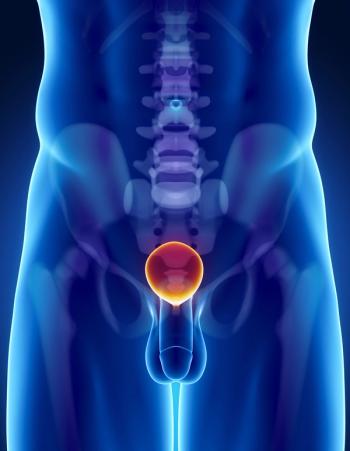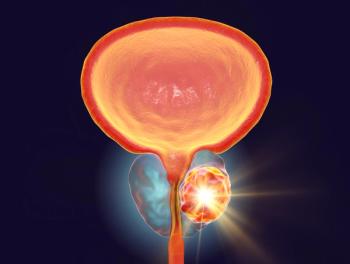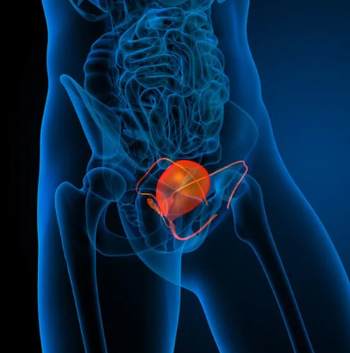
Oncology NEWS International
- Oncology NEWS International Vol 16 No 5
- Volume 16
- Issue 5
New Nonthermal Ablative Modality May Have Advantages in Prostate Cancer: Preclinical Data
Irreversible electroporation (IRE), a new nonthermal ablative modality that destroys parenchymal tissue while leaving vasculature and nerves intact, appears to be promising for application in the prostate
SEATTLEIrreversible electroporation (IRE), a new nonthermal ablative modality that destroys parenchymal tissue while leaving vasculature and nerves intact, appears to be promising for application in the prostate, finds a preclinical study reported at the 2007 Annual Meeting of the Society of Interventional Radiology (abstract 103).
Current thermal ablative modalities used in the prostate such as radiofrequency ablation and cryoablation have limitations, according to lead author Gary M. Onik, MD, an interventional radiologist at Florida Hospital/Celebration Health. Notably, Dr. Onik said, the procedure time may be lengthy, critical structures can be damaged because of lack of ablative specificity, treated lesions may take years to resolve (which may be especially problematic in men with urinary obstruction), and the urethra creates a heat sink effect that may contribute to periurethral recurrences.
During IRE, an electrical pulse is used to generate a voltage gradient across tissue, creating permanent pores in cell membranes that lead to cell death. "As opposed to cryosurgery and radiofrequency ablation where we basically have one switch and we just turn it on, with IRE we have a number of electrical parameters that we can adjust," Dr. Onik said. These parameters include voltage, number of pulses, pulse width, interpulse time, and pulse form.
"Interestingly, in IRE, the active electrode length is theoretically infinite, so if you have a long lesion, you can expose 5 cm and theoretically destroy whatever length you want," he noted. Probe width and interprobe distance can also be varied to modify ablative effects.
Preliminary work in cell cultures established that delivery of 80 pulses of IRE with a gradient of at least 250 V/cm kills 100% of prostate cells, according to Dr. Onik. Based on mathematical modeling using equations that are independent of blood flow and large vasculature, it was then possible to predict cellular disruption in vivo for a given IRE probe distance and size, he explained, which is helping to expedite further preclinical testing.
Animal Study
In the in vivo study, the investigators tested transperineal IRE of the prostate under transrectal ultrasound guidance in eight dogs, varying the voltage, interprobe distance, and number of pulses, and collecting treated tissue after 24 hours, 2 days, or 2 weeks. Treatment produced hemorrhagic hemiprostate lesions extending up to but sparing the urethra. "Interestingly, on color Doppler immediately after the ablation, there appears to be no blood flow associated with that side of the prostate," Dr. Onik noted, but blood flow is restored at 2 days. "So we feel that this was not ablation of those vessels but rather spasm of those vessels from the electrical pulse," he said.
Histology performed on day 2 confirmed that the urethra was intact despite destruction of the surrounding tissue. "What we have found with IRE in multiple tissues is that it doesn't affect the structure of the tissue itselfit kills the cells, but you don't lose the collagen network," Dr. Onik said. "And so it gives you a chance for regrowth of normal mucosa." Another important finding, he noted, was that the vessels, including microvessels, and the nerves within the tissue likewise appeared unaffected.
"At 2 weeks, there is marked resolution of these lesions because the microvasculature is not affected, so we get marked shrinking of the tissue," Dr. Onik said. "This has implications for the prostate because these patients who might have BPH [benign prostatic hyperplasia]-type symptoms could get a beneficial effect from this." The vessels, nerves, and urethral mucosa were again intact at this time point. "You get a very narrow zone of transitionviable, not viableand it occurs at that 250 V/cm line," he added.
A final finding was enlargement of the lymph nodes in the draining areas associated with IRE-induced lesions. "What this means, I have no idea. But it could be very interesting to see if this could have an effect on micrometastatic disease to lymph nodes later on down the line," Dr. Onik commented.
One adverse effect of IRE was muscle contraction, which generally had the appearance of mini-defibrillations and was not a major problem under general anesthesia, Dr. Onik said. However, he added that there is much to be learned as far as potential morbidity when IRE is used in patients. "One of my concerns is: When we start to get to larger areas, are we going to see effects from the dead tissue because we aren't affecting the vasculature, and will we see toxicity from that?" he said.
In conclusion, Dr. Onik said, "IRE is a new nonthermal ablation modality, and it does have potential significant advantages over thermal ablation modalities, particularly in the prostate, where if we can save vasculature, if we can save nerves, and we don't have recurrences near the urethra, we can do a much better job at lower morbidity for patients."
Articles in this issue
over 18 years ago
Escalating Drug Costs Could Provoke Consumer Backlashover 18 years ago
Large Study Casts Doubt on Value of CADover 18 years ago
Cetuximab Does Not Increase Mucositis in H&N Cancerover 18 years ago
2004 Update Shows Continued Lower Breast Ca Incidenceover 18 years ago
Reclast Single-Dose Infusion Approved for Paget's Diseaseover 18 years ago
Fragmin Approved for VTE in Cancer Ptsover 18 years ago
New Phase III Trial of Genasense in Advanced Melanoma Plannedover 18 years ago
Cervical Cancer Vaccines Show Sustained Protectionover 18 years ago
The 'New' Medicare: Passive Payer No More; PQRI Is First StepNewsletter
Stay up to date on recent advances in the multidisciplinary approach to cancer.




















































































